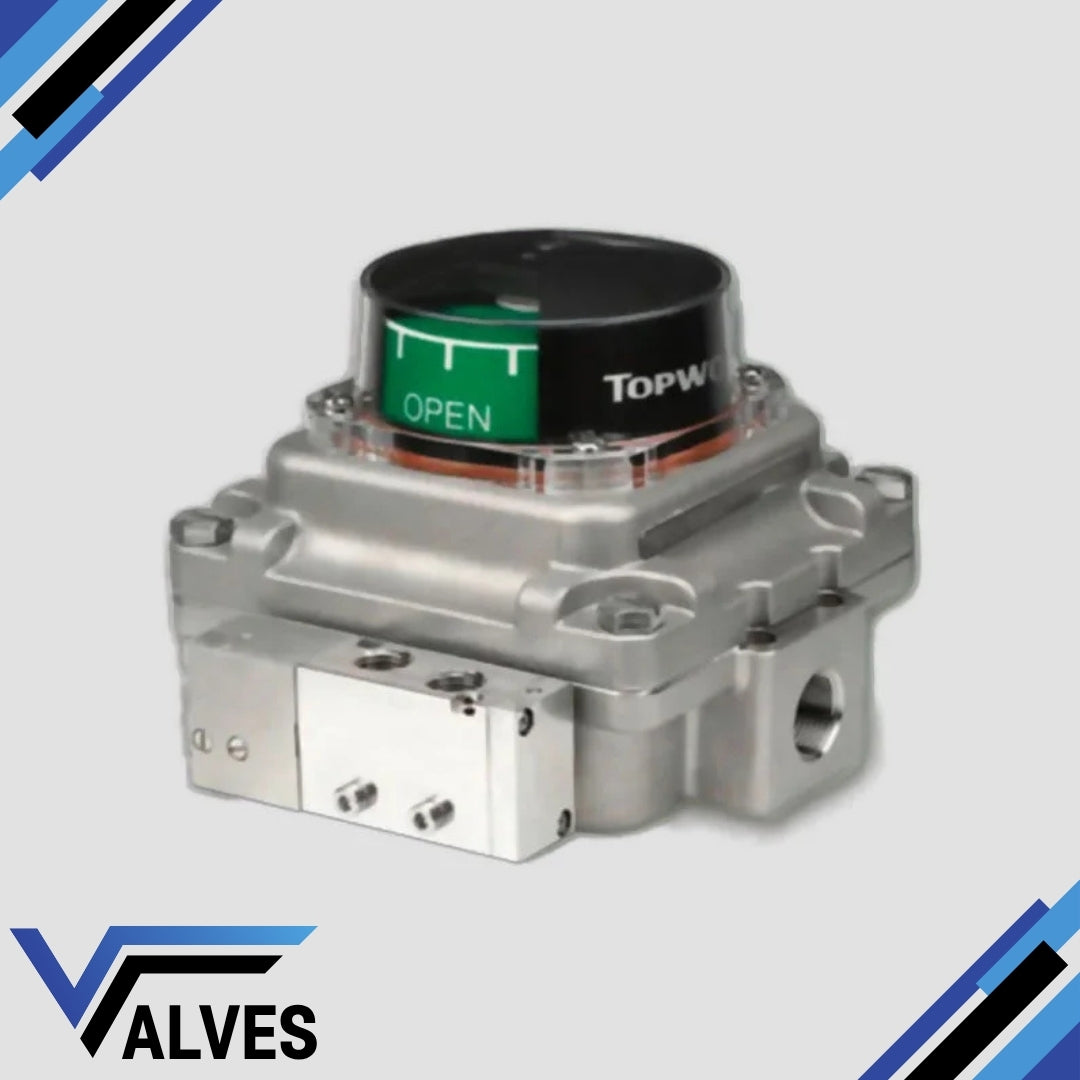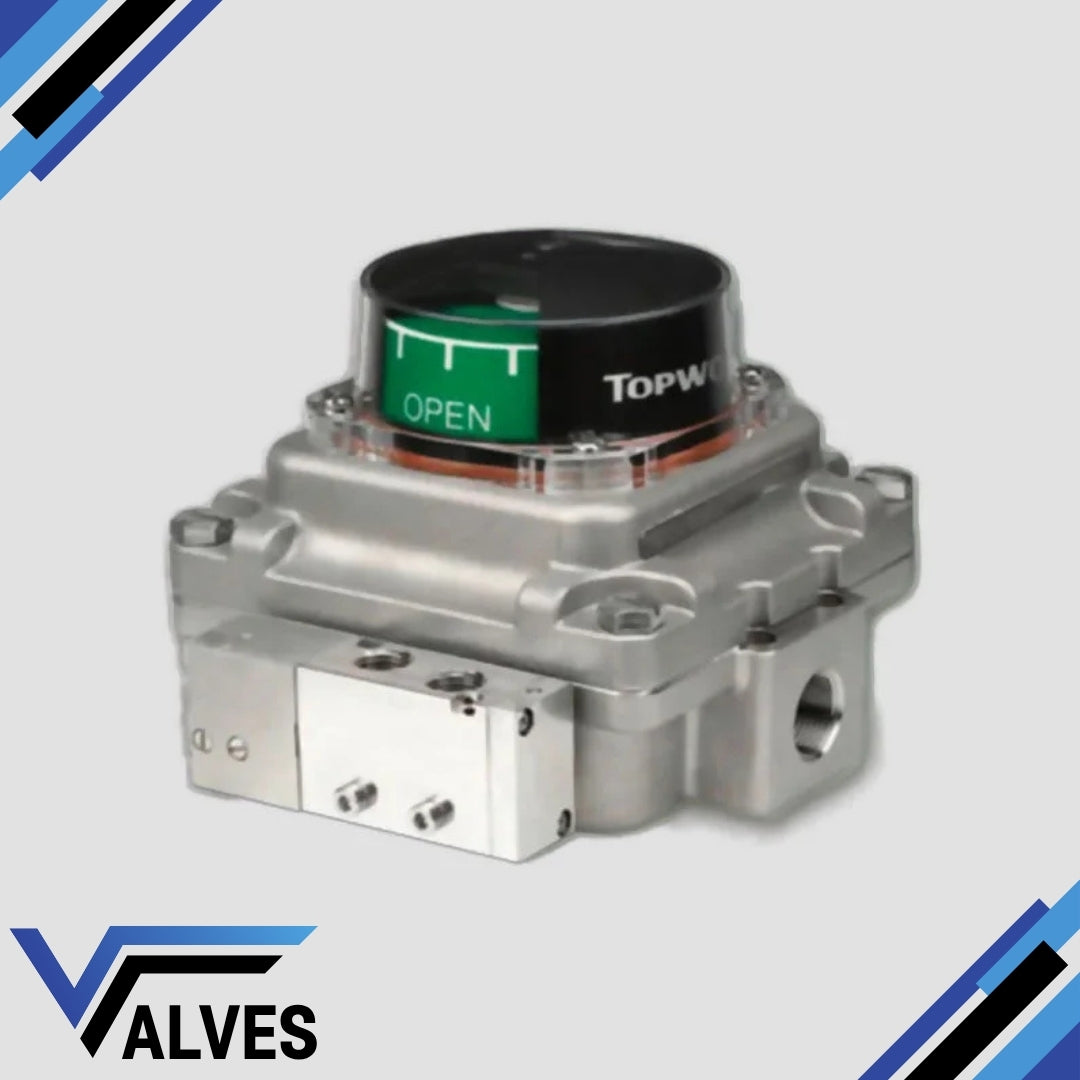Topworx Switchboxes
TopWorx Limit Switch Box TXS-D21GMMM Valve Monitor
TopWorx Limit Switch Box TXS-D21GMMM Valve Monitor
Couldn't load pickup availability
The TXS-D21GMMM is built to deliver high-performance valve position monitoring with global certifications such as ATEX, IECEx, and SIL approval, making it suitable for use in hazardous and explosive environments. The robust construction, coupled with advanced GO™ switch technology, provides a fail-safe solution, ensuring that the device operates reliably in tough industrial conditions.
Key Features:
- Compact and Rugged Design: Engineered for extreme environments, the TXS switchbox features durable materials that withstand harsh conditions, including temperature fluctuations and exposure to dust and water.
- Global Certifications: Certified for use in hazardous areas, including ATEX, IECEx, and SIL compliance, which ensures safety in industries like oil & gas, chemical processing, and power generation.
- GO™ Switch Technology: Utilises dry-contact GO™ switches that offer non-contact position sensing with no power consumption, ensuring reliable performance without voltage drop or leakage.
- Field-Configurable: Equipped with easily adjustable cams and targets, allowing for quick setup and configuration on-site.
- Ingress Protection: Rated at IP66/67, providing protection against dust and high-pressure water jets, making it suitable for outdoor and offshore environments.
Additional Information:
The TXS-D21GMMM valve monitor integrates seamlessly into industrial control systems, offering flexible communication options for real-time feedback and enhanced operational safety. Its design caters to reducing downtime and increasing efficiency, making it a valuable asset for plants and facilities dealing with critical valve control and monitoring operations.
This switchbox is ideal for industries that require reliable performance in hazardous zones, with the added benefit of long operational life and minimal maintenance requirements.
Share

FAQ's
What is the difference between a valve and an actuator?
What types of actuators are available?
The main types of actuators are:
Pneumatic actuators – use compressed air for fast, reliable operation.
Electric actuators – use electrical power for precise control.
Hydraulic actuators – use fluid pressure for high-torque applications.
Each type offers unique advantages depending on the environment, media, and system control needs.
How do I choose the right actuator for my valve?
To select the correct actuator, consider:
Valve type and torque requirement
Power source available (air, electric, or hydraulic)
Operating environment (temperature, humidity, hazardous area)
Control signal type (on/off or modulating)
Matching actuator torque and compatibility with the valve’s ISO mounting ensures reliable performance.
What are the main types of valves used in automation?
The most common valves in automated systems include:
Ball valves – for tight shutoff and quick operation.
Butterfly valves – for larger flow control with compact design.
Globe valves – for precise throttling and flow regulation.
Check valves – to prevent backflow.
Gate valves – for full bore flow isolation.
What’s the difference between a double-acting and spring-return actuator?
Double-acting actuators use air (or power) to both open and close the valve.
Spring-return actuators use air to open (or close) the valve, and a built-in spring to automatically return it to a safe position when power or air is lost — ideal for fail-safe operation.
How often should valves and actuators be serviced?
Regular maintenance intervals depend on operating conditions, but a good rule of thumb is to inspect every 6–12 months.
This includes checking for leaks, lubrication, seal wear, and actuator responsiveness to prevent unexpected downtime.

